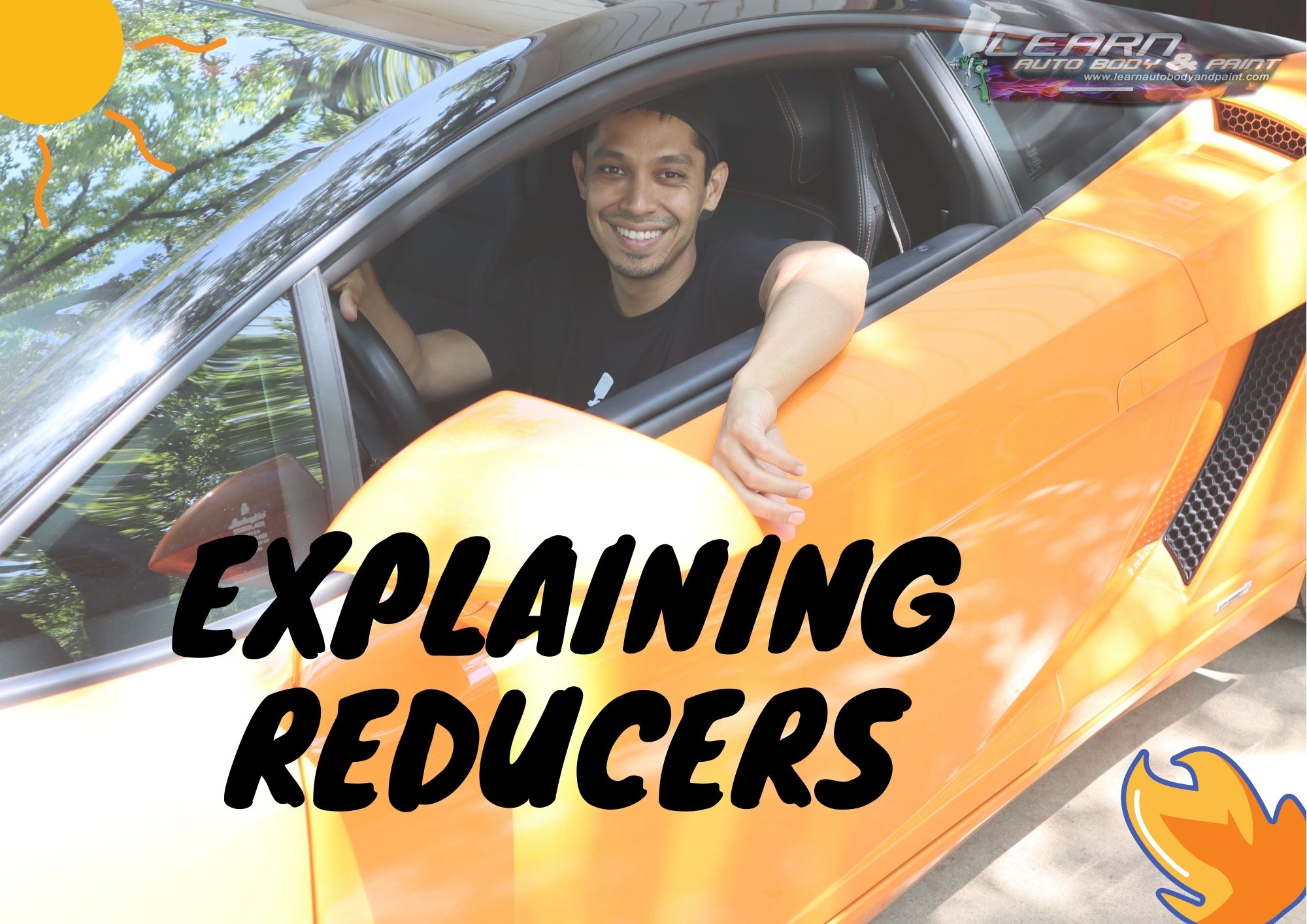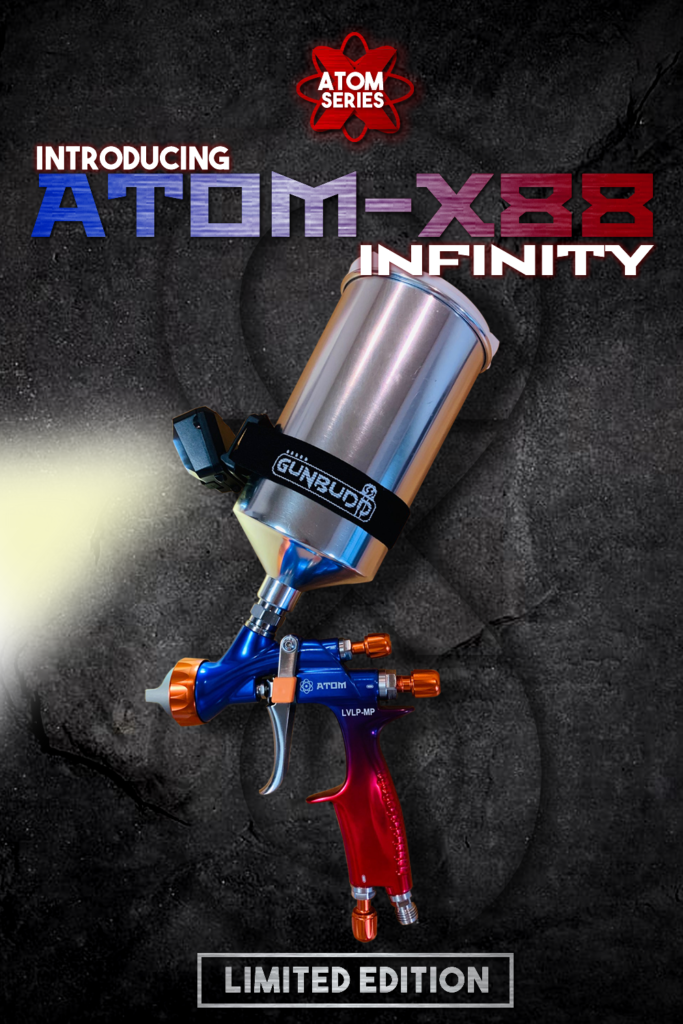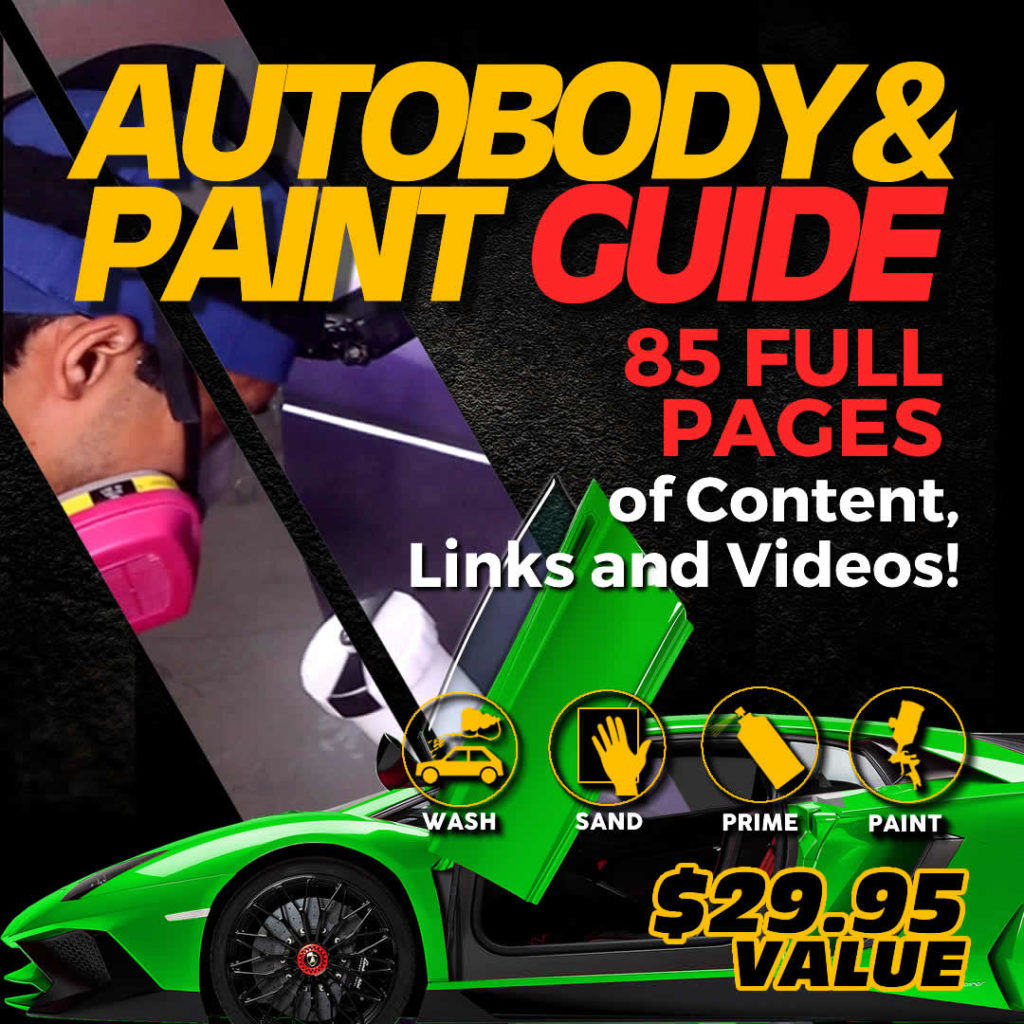I hope you enjoyed the video! Secure your LearnAutoBodyAndPaint VIP slot now and be part of the #BossPainter community!
We are back with another auto body Q&A session! Today’s focus is Explaining Fast, Medium and Slow Reducers.
Question: When painting in cold weather, there’s a type of heater to warm a garage, which uses butane kerosene. Do they react to primers or paint?
I don’t know about Kerosene, but I wouldn’t think so as long as you have good ventilation. I’ve used butane in the past and there won’t be any reaction with your paint.
Question: What type of air hose do you recommend? I found a Harbor Freight called Diablo for 15?
Let me check that product. So it’s ⅜ by 50 feet, so it’s fine. I like Goodyear because it lasts for a very long time. Some products only last for a couple of months because of the heat and the cold. We’ve had some cheap air hoses and it starts to get some air bubbles and blow up every once in a while.
I’d recommend that you check your hose before you do car painting so you won’t have issues with air bubbles and won’t blow up. That’s the last thing you’d want. 😨
Question: Any issues shooting body paint on brake callipers or are they going to run too hot and burn it?
You can definitely use regular paint. I’ve done it and never had any issues. You can also use a high heat paint like a rattle can high heat paint.
Question: Can I use jp202 over the cheap lacquer from auto parts stores? I have to redo my paint.
For everyone’s knowledge, Jp202 is 2K filler primer by ShopLine. You need to sand it from anywhere between 150 to 220-grit. Spray light coats first to make sure you are not getting any chemical reaction. Remember that you easily get a chemical reaction when you just load the paint on. That’s what you are avoiding.
Question: When I spray my primer on the repaired area I noticed the next day that it shows like a map all around it. Am I applying my first coat too heavy that am not letting it dry properly?
You might be laying it on too heavy. I’m thinking that it’s biting on certain areas. Sand it all off. You don’t neet totally sand it all of if you are using a 2K primer. Get it all flat with 220 to 240-grit, put light coats on and let it dry. Then, put a little more coats on then let it dry again.
Question: What should be the size of the DA sander and the buffer for a motorcycle project and what brand or company do you recommend?
I use a standard 6-inch orbital DA sander on pretty much everything. You need to invest in tools with better brands because these tools last you a very long time. There’s DeWalt, Hutchins, Advantage and Chicago Pneumatic if you want to go cheaper.
Question: What’s your recommended psi for clear coat and base coat? Also, any tips on mixing Rustoleum base paint. do I have to use paint thinner or acetone?
Yes, you can use acetone or paint thinner to reduce it down a little bit. I’ve done it in the past. I don’t recommend Rustoleum Paint but I’d go instead with single-stage enamel.
The recommended psi for clear coat is 28 to maybe 30 psi, with trigger pulled. On the other hand, basecoat is 25 to 27 psi. Again, try to shoot something to check if it’s all good.
Again, if you want great quality spray guns that won’t break the bank, check out the Atom Spray Guns on Zoolaa. 👉👉👉
These are the ONLY spray guns that I use in my shop. It’s the BEST ALTERNATIVE.
Question: Can you explain fast, medium and slow reducers?
A good painting temperature range is from 70 to 90 degrees. Slow reducers are good because they allow your paint to flow out. Slow is the best for complete paint jobs.
Medium reducers are used in a little colder environment. You can use a medium reducer in maybe 65 to 75-degree environment to set up earlier.
Fast reducers are used for touch-ups. You can be working with just a fender in around an 80-degree environment.
Question: When shooting 2K primer with a 1.7mm HVLP spray gun on a 20gallon compressor, what complication will I run in to?
The only complication is running out of air from your compressor. You’re using an HVLP spray gun which eats up a lot of volume plus a 1.7mm tip size with a lot of primer coming out of it, so you might have to play catch-up since you’re using a small air compressor. You need to take your time.
When you’re spraying primers, you need to spray anywhere between 22 to 25 psi. Hence, you won’t be spraying primer at high pressure because primers are meant to just put on and not atomize.
It’s Tony from LearnAutoBodyAndPaint. Thanks everyone for joining me today. I hope you enjoyed our session and learned a lot from it! 🙃
Please hit that 👍 button, share and subscribe to my channel! Click on that 🔔 button to get notified of new videos.
Talk soon! Cheers!
Tony
Don’t forget to grab your FREE 85-Page Auto Body And Paint Manual to get started on working on customizing your own car projects!
Join the #BossPainter community now! Check out the LearnAutoBodyAndPaint VIP Program! With over 100 hours of training videos, e-reads and bonuses. You will definitely learn all the basics (and more!) to get excellent professional paint jobs on your own projects. Start customizing your own cars now!
If you’ve enjoyed this blog, check out other great resources below!
Other Helpful Links:
What Causes Solvent Pop or Fisheye? Auto Body Q&A 🚗
Spraying A Safe With 2k Single Stage Using an LVLP Spray Paint Gun
Best Temperature For Your Garage Or Paint Booth: Auto Body Q&A 🔥



In your answer to a vip members question u said, “When you’re spraying primers, you need to spray anywhere between 22 to 25 psi. Hence, you won’t be spraying primer at high pressure because primers are meant to just put on and not atomize.”
My question , does that include epoxy primer also??
They are still being atomized, just that primers don’t need to be sprayed at such high pressure.